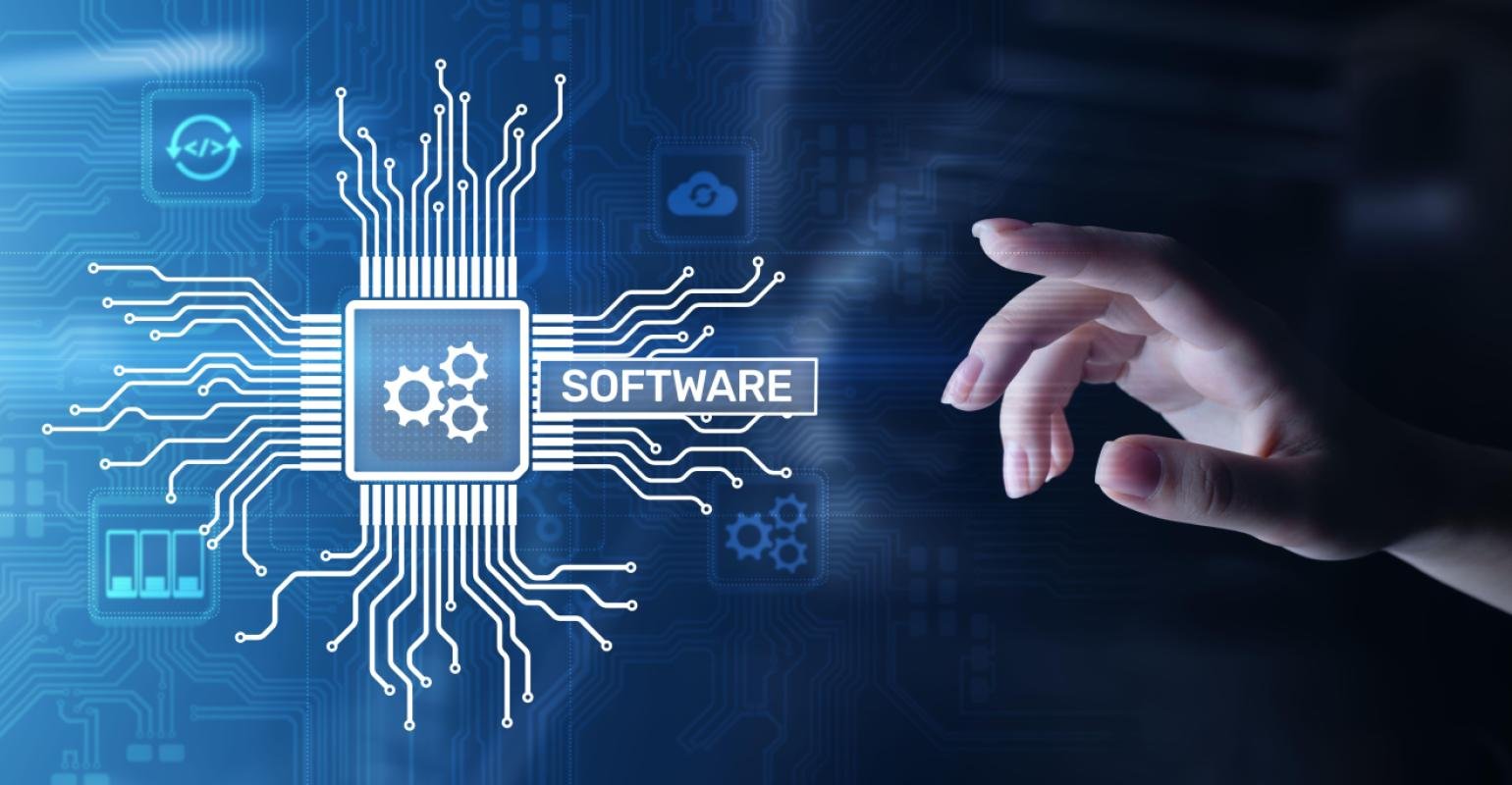Software
Key Trends and Predictions for Software Development in 2023 and Beyond
Published
2 years agoon
By
Jack
Welcome to the future of software development! It’s an exciting time to be in the tech industry as we head toward 2023 and beyond. The world is changing rapidly, and technology is evolving just as quickly to keep up with the times. As a software developer, it’s crucial to stay on top of the latest key trends and predictions to ensure that you’re always at the forefront of your field.
In this article, we’ll take a look at some of the key trends and predictions for software development in the coming years. From artificial intelligence (AI) and the Internet of Things (IoT) to blockchain and low-code development, we’ll explore how these emerging technologies are changing the way we think about software development.
So sit back, grab a cup of coffee, and get ready to explore the exciting world of software development in 2023 and beyond. Whether you’re a seasoned developer or just starting, there’s something here for everyone. Let’s dive in and see what the future holds!
Table of Contents
ToggleKey Trend 1: Artificial Intelligence (AI)
Artificial Intelligence (AI) has been a buzzword in the tech industry for several years now, and it’s showing no signs of slowing down. It’s one of the key trends that’s expected to shape the future of software development in 2023 and beyond.
From machine learning and natural language processing to computer vision and predictive analytics, AI is poised to transform the way we develop software and interact with technology.
Here are some ways that AI is likely to impact software development in the coming years:
Improved Efficiency and Accuracy
AI can help automate repetitive tasks, freeing up developers to focus on more complex and creative work. Additionally, AI-powered tools can improve accuracy by detecting and correcting errors in code.
Enhanced Personalization
AI can be used to analyze user data and provide personalized recommendations or experiences. This can lead to increased user engagement and loyalty.
Advanced Analytics
AI can help developers make sense of large amounts of data and identify patterns that would be difficult or impossible to detect manually. This can lead to new insights and opportunities for innovation.
Smarter Automation
As AI becomes more sophisticated, it has the potential to automate even more complex tasks, such as software testing and deployment.
New Applications
AI is already being used in a wide range of applications, from chatbots and virtual assistants to autonomous vehicles and predictive maintenance. As the technology continues to advance, we can expect to see even more innovative use cases emerge.
Key Trend 2: Internet of Things (IoT)
The Internet of Things (IoT) is another key trend that’s poised to shape the future of software development in 2023 and beyond. IoT refers to the network of connected devices and sensors that can exchange data and communicate with each other over the internet.
From smart homes and wearables to industrial equipment and transportation systems, the IoT is transforming the way we interact with technology and the world around us.
Here are some ways that IoT is likely to impact software development in the coming years:
Greater Connectivity
With more devices connected to the internet than ever before, developers will need to create software that can manage and communicate with these devices across a variety of platforms and protocols.
Advanced Analytics
IoT devices generate a massive amount of data, which can be used to gain new insights and improve decision-making. Developers will need to create software that can handle the processing and analysis of this data.
Increased Automation
IoT devices can be used to automate a wide range of tasks, from home automation and energy management to industrial control and supply chain management. Developers will need to create software that can support these new use cases.
Enhanced User Experience
IoT devices can provide personalized experiences and real-time feedback, which can improve user satisfaction and loyalty. Developers will need to create software that can take advantage of these features and deliver a seamless user experience.
IoT app development companies can help businesses design and build software that can provide personalized experiences to their users.
New Security Challenges
With more devices connected to the internet, there are also more potential points of vulnerability. Developers will need to create software that can protect these devices and the data they generate from cyber threats.
Key Trend 3: Blockchain
Blockchain is another key trend that’s expected to have a significant impact on software development in 2023 and beyond. At its core, blockchain is a distributed ledger technology that allows for secure and transparent record-keeping.
While it’s perhaps most well-known as the underlying technology behind cryptocurrencies like Bitcoin, blockchain has a wide range of potential applications in industries ranging from finance and healthcare to supply chain management and beyond.
Here are some ways that blockchain is likely to impact software development in the coming years:
Improved Security
Blockchain’s distributed nature and cryptographic algorithms make it extremely difficult to tamper with or hack. Developers can leverage blockchain to create secure and transparent systems for storing and transferring sensitive data.
Increased Efficiency
Blockchain can help streamline processes and reduce the need for intermediaries. Developers can create blockchain-based solutions that automate processes and reduce the potential for errors or fraud.
Greater Transparency
Blockchain’s decentralized nature means that information is shared transparently and securely between all participants in a network. Developers can create blockchain-based solutions that provide greater visibility into supply chains, financial transactions, and more.
New Business Models
Blockchain has the potential to disrupt existing business models by enabling new forms of decentralized collaboration and value creation. Developers can create blockchain-based platforms that allow for peer-to-peer transactions and new forms of economic activity.
Emerging Use Cases
While blockchain is still a relatively new technology, there is already a wide range of use cases being explored across industries. Developers can play a key role in driving innovation in areas such as healthcare, energy, and governance by creating blockchain-based solutions.
Key Trend 4: Low-code Development
Low-code development is a key trend that’s poised to revolutionize the way software is developed in 2023 and beyond. At its core, low-code development refers to the process of creating software applications using visual interfaces and pre-built templates, rather than writing code from scratch.
This approach can help accelerate development cycles and enable non-technical users to participate in the development process.
Here are some ways that low-code development is likely to impact software development in the coming years:
Faster Time-to-Market
Low-code development can help accelerate development cycles by allowing developers to create applications more quickly and with fewer resources.
Greater Accessibility
Low-code development platforms are designed to be user-friendly and require minimal coding experience. This can help open up software development to a wider range of users, including citizen developers and business analysts.
Improved Collaboration
Low-code development platforms typically include collaboration features that allow multiple users to work together on the same project. This can help improve communication and reduce the potential for errors or miscommunications.
Increased Agility
Low-code development can help organizations respond more quickly to changing market conditions and customer needs. Developers can quickly iterate on applications and make changes as needed, without having to go through a lengthy development cycle.
New Use Cases
Low-code development is still a relatively new technology, and there are already a wide range of use cases being explored across industries. Developers can play a key role in driving innovation in areas such as automation, mobile app development, and more.
Key Trend 5: Cloud Computing
Cloud computing is a key trend that’s set to continue shaping the future of software development in 2023 and beyond. At its core, cloud computing refers to the delivery of computing services – including servers, storage, databases, and more – over the internet.
By leveraging cloud computing, developers can create scalable and flexible applications that can be accessed from anywhere, at any time.
Here are some ways that cloud computing is likely to impact software development in the coming years:
Improved Scalability
Cloud computing allows developers to scale their applications up or down based on demand, without having to invest in additional hardware or infrastructure.
Greater Flexibility
Cloud computing allows developers to build and deploy applications using a wide range of tools and technologies, and to easily integrate with other systems and services.
Enhanced Security
Cloud providers typically offer robust security features and compliance certifications, which can help ensure that applications are secure and compliant with industry standards and regulations.
Increased Collaboration
Cloud computing makes it easier for developers to collaborate on projects and share resources, regardless of their physical location or organizational boundaries.
New Services and Capabilities
Cloud providers are constantly introducing new services and capabilities that can help developers create more sophisticated and innovative applications.
Predictions for Software Development in 2023 and Beyond
As we look ahead to 2023 and beyond, it’s clear that the world of software development will continue to evolve and transform. While it’s impossible to predict exactly what the future will hold, there are a few key software development trends and predictions that are worth considering as we look ahead.
Here are some of the top predictions for software development in the coming years:
Continued Growth of AI
As AI technology continues to advance, we can expect to see more and more applications of AI in software development, from automated testing and bug fixing to intelligent code generation.
Increased Focus on Security
With the rise of cyber-attacks and data breaches, software development teams will need to place a greater emphasis on security and privacy in their applications, including the adoption of new security tools and best practices.
Greater Adoption of Low-Code Development
Low-code development platforms are expected to become increasingly popular in the coming years, as more businesses seek to accelerate development cycles and reduce the need for specialized coding skills.
Growing Importance of DevOps
DevOps practices, which focus on collaboration and communication between development and operations teams, are likely to become even more critical in the coming years as software applications become more complex and distributed.
Increased Use of Cloud Computing
Cloud computing is already a key trend in software development, and we can expect to see even more applications of cloud technology in the coming years, from serverless computing to edge computing.
Conclusion
In conclusion, software development is a dynamic and constantly evolving field, and the trends and predictions outlined in this article offer a glimpse into what we can expect to see in the coming years. From the continued growth of AI and the Internet of Things to the increasing importance of security and DevOps as a Service, software developers will need to stay abreast of these trends to remain competitive and relevant.
As we move into 2023 and beyond, it’s clear that software development will continue to be a key driver of innovation and progress in virtually every industry. By embracing new technologies and practices, developers can create applications that are more scalable, flexible, and secure than ever before.

